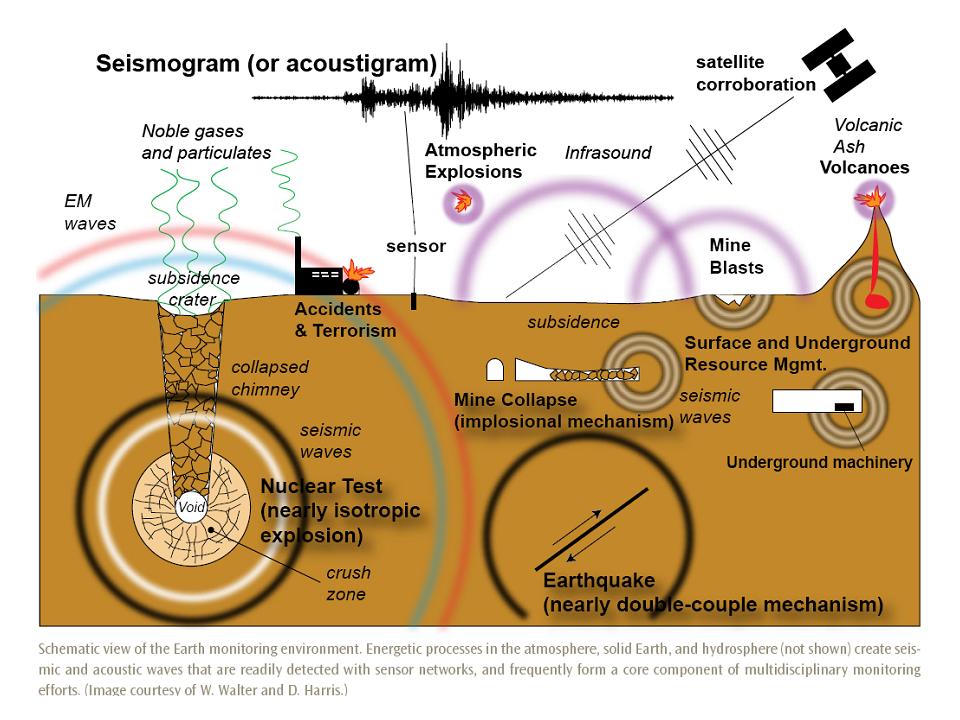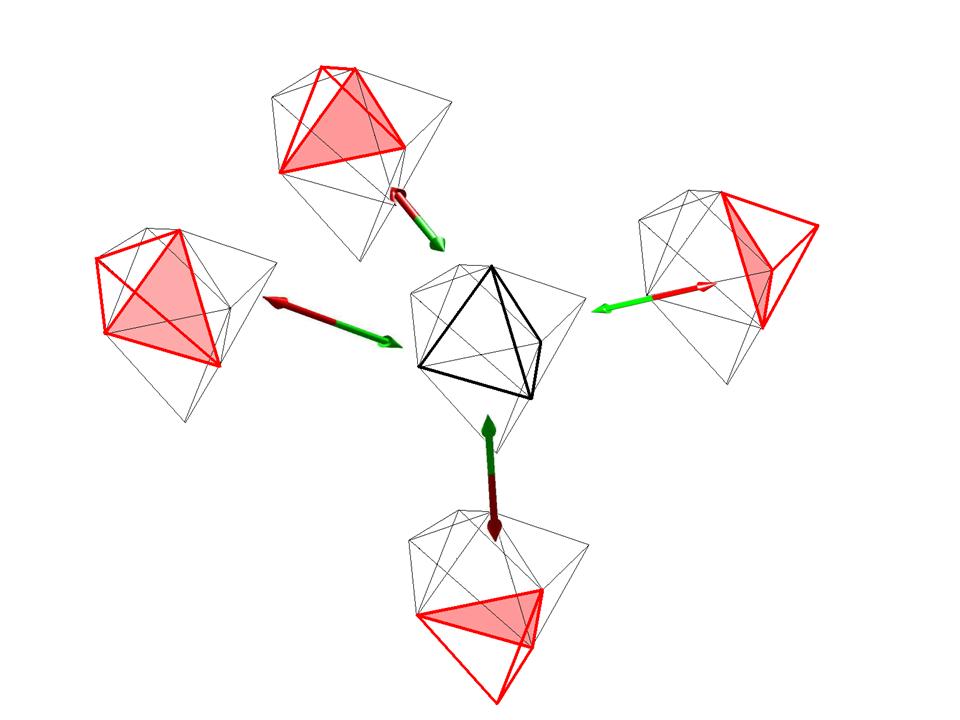Welcome to the SeisSol Web-Page
The SeisSol working group develops and applies scientific software for the numerical simulation of
seismic wave phenomena. Seismic waves can be produced by various sources as shown in the figure on the right
(taken from www.iris.edu) and
typically propagate through heterogeneous material.

Along the propagation path the source signature is perturbed by the medium
that might exhibit complex geometrical structures and rheological properties.
Therefore, it is difficult to extract information about the source mechanism or the structural features separately
from the resulting seismograms that are often observed only at the Earth's surface.
The accurate numerical simulation of the propagation of seismic waves helps to understand complicated wave phenomena.
Synthetic data sets and seismograms can be computed to support seismological research to understand observed data from the
field and to determine the characteristics of sources and material structures.
Characteristics of the SeisSol simulation software are:
- use of tetrahedral and hexahedral meshes
to approximate complex 3D model geometries and rapid model generation
- use of acoustic, elastic, viscoelastic, poroelastic, and anisotropic
material
to approximate realistic geological subsurface properties.
- use of arbitrarily high approximation order in time and space
to produce reliable and sufficiently accurate synthetic seismograms or other seismological data set.
- use of explicit local time step algorithm, such that
each element is running its own optimal time step length to reduce computation time.
- use of hybrid openMP + MPI parallelization concept.
- use of hardware aware optimization by individual developed (assembler) computing kernels.
- use of HDF5 data format enabling parallel output suitable for paraview.
The SeisSol simulation software is based on a numerical approach using the Discontinuous Galerkin Finite Element Method
which exhibits the desirable properties of:

- orthogonal polynomial basis functions on tetrahedrons, hexahedrons, pyramids, and prisms.
- locality of the computations, as only directly neighboring elements are required, which leads to
small amount of communication for parallel calculations
- concept of numerical fluxes from the Finite Volume framework that allows us to consider different physical
properties occuring in wave propagation problems
- incorporation of various friction laws (as linear slip weakening and rate and state friction) in order simulate the frictional sliding for spontaneous dynamic rupture earthquake simulations
Connection to other scientific communities and software products:
- computational geometry, mesh generation, mesh partitioning, visualization, and mathematical geology
(e.g. Simmodeler,
Paraview,
Gocad,
ICEM CFD,
METIS,
ZOLTAN,
SCOTCH)
Applications and collaborations:
- Find out more about our seismological applications on our Applications web-page (left).
News:
Last update: 15-04-2014


